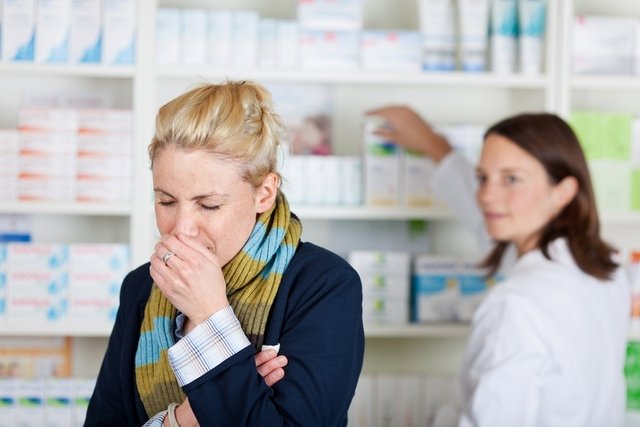The main symptoms of lung infection are a dry cough or phlegm, difficulty breathing, rapid and shallow breathing and a high fever that lasts more than 48 hours, only decreasing after the use of medication.
It is important that in the presence of symptoms, the person goes to the doctor so that the diagnosis can be made and appropriate treatment can be started, preventing complications.
Lung infection or lower respiratory infection occurs when microorganisms enter the body through the upper respiratory tract and remain in the lungs, being more common in people who have a weakened immune system due to chronic diseases or medication use, or due to age, for example. example. Learn more about lung infection.
Main symptoms
The main symptoms of lung infection are:
- Dry or secretive cough;
- High and persistent fever;
- Loss of appetite
- Headache;
- Chest pain;
- Back pain;
- Difficulty breathing;
- Rapid and shallow breathing;
- Runny nose.
If these symptoms are present, it is important to consult a general practitioner, pediatrician or pulmonologist so that a diagnosis can be made and treatment can begin. The diagnosis is made through the evaluation of symptoms, lung auscultation, chest x-ray, blood count and analysis of sputum or nasal mucosa to identify which microorganism is causing the infection.
Don’t ignore your symptoms!
How the diagnosis is made
The diagnosis of lung infection is made by a general practitioner, pediatrician or pulmonologist by evaluating the signs and symptoms presented by the person, in addition to the results of imaging and laboratory tests that may be requested. Normally, the doctor recommends a chest X-ray to identify any sign of changes in the lungs.
In addition, the doctor also recommends carrying out blood tests, such as a blood count, and microbiological tests based on the analysis of sputum or a sample of the nasal mucosa to identify which microorganism is associated with the infection and, thus, it is possible to start treatment with the most recommended medicine.
Treatment of lung infection
Treatment for lung infection is carried out in accordance with medical advice and is normally recommended for the person to rest, hydrate adequately and use antibiotics, antivirals or antifungals for 7 to 14 days depending on the microorganism identified. Furthermore, the use of medicines to reduce pain and fever, such as Paracetamol, for example, may be indicated. Learn more about treatment for lung infection.
Respiratory physiotherapy is mainly indicated in the case of the elderly, as they tend to be more bedridden, and also in the case of people who acquired a respiratory infection during their stay in hospital, with physiotherapy being useful to help eliminate secretions. Understand what respiratory physiotherapy is and how it is performed.
Bibliography
- Gaiolla, PSA; Coelho, LS; Cavalcante, RS. Recommendations for the care of patients with lower respiratory tract infections: community-acquired pneumonia, healthcare-associated pneumonia, hospital-acquired pneumonia, exacerbation of chronic obstructive pulmonary disease, exacerbation of. Hospital das Clínicas of the Faculty of Medicine of Botucatu. Botucatu – SP: 2015.

Sign up for our newsletter and stay up to date with exclusive news
that can transform your routine!
Warning: Undefined array key "title" in /home/storelat/public_html/wp-content/plugins/link-whisper-premium/templates/frontend/related-posts.php on line 12
Warning: Undefined array key "title_tag" in /home/storelat/public_html/wp-content/plugins/link-whisper-premium/templates/frontend/related-posts.php on line 13




